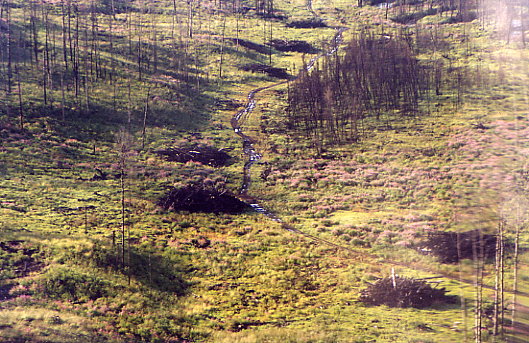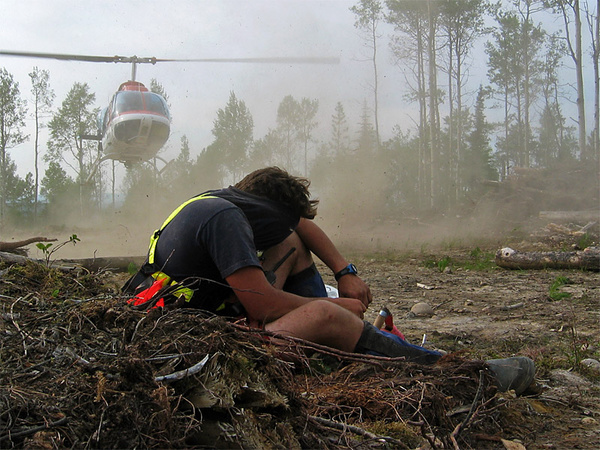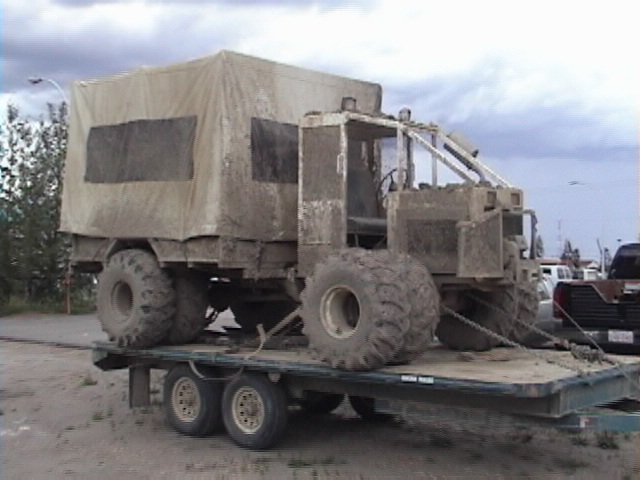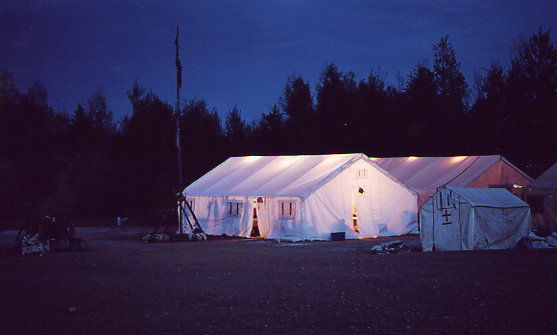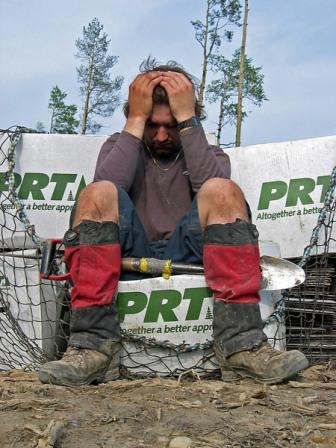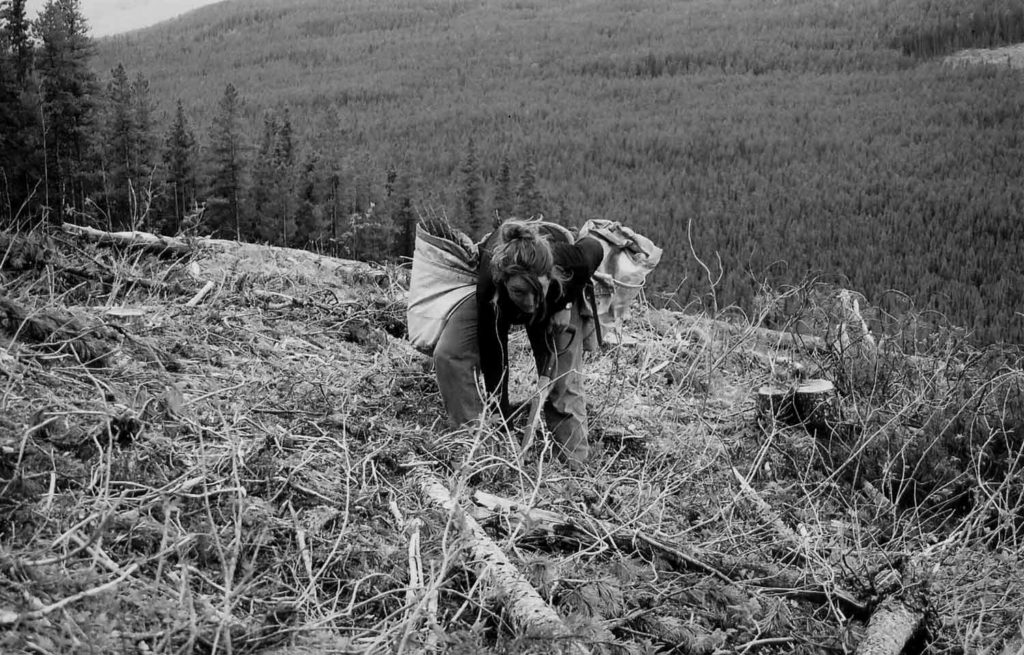The Basics of Tree Planting
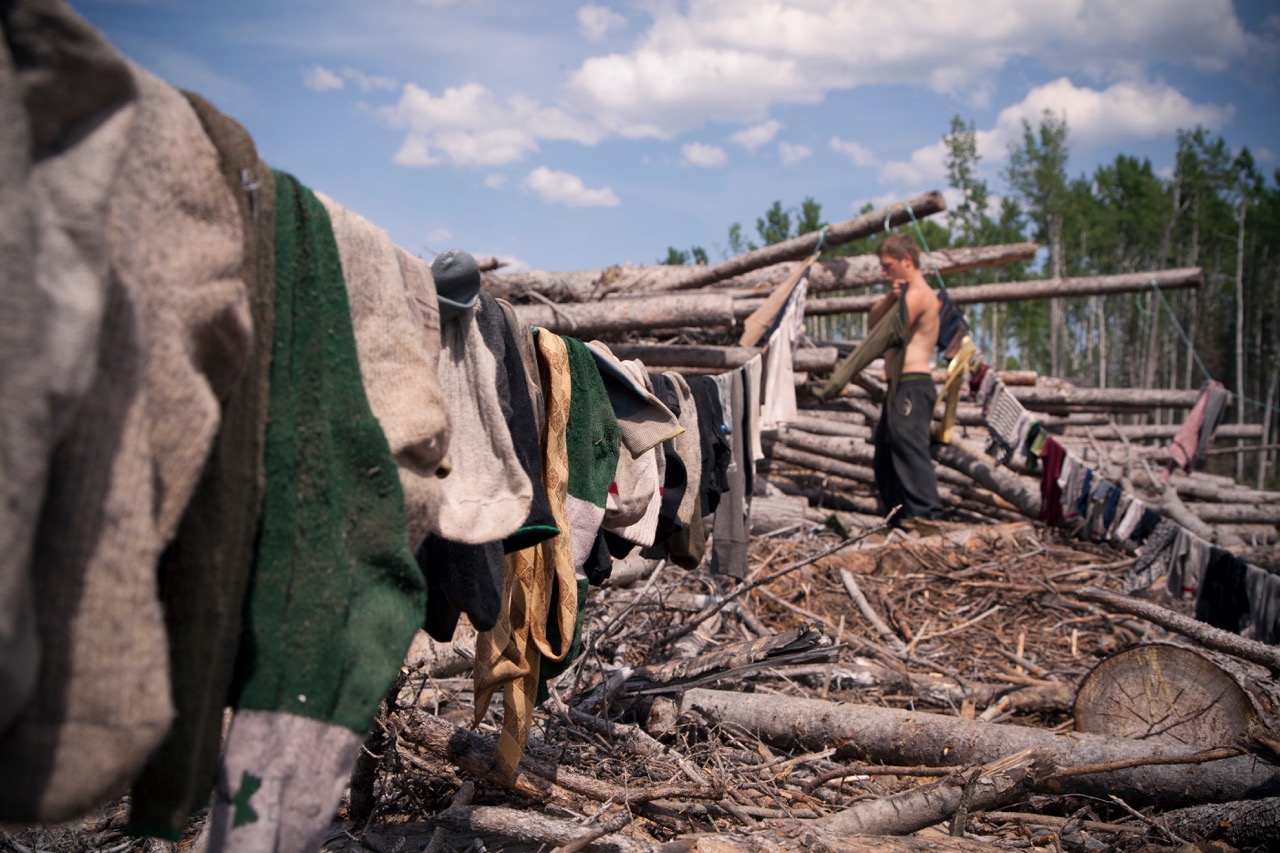
Here is a quick and dirty introduction to tree planting.
What Gets Cut, Gets Reforested
Every year, some 500 million trees are planted in Canada to establish new forests where trees have been harvested. Typically, the responsibility for successful re-establishment of the trees rests with the company that had the trees cut and delivered to their facility. These companies make lumber and paper products and have familiar names such as Canfor, Weyerhaeuser, and Interfor.
Introducing Tree Planters
These companies, or licensee holders, hire tree planting companies to carry out the delivery and planting of the trees. Tree planting companies hire tree planters and pay them for each tree that they plant to the strict quality and density standards.
Where You Go to Plant Trees
Tree planters are hired from around the country and they converge at a starting point somewhere near the first project. This is typically a small town with at least one major forest products company. Certainly, you will have forests around you.
The Worksite
Planting conditions and worksites will vary wildly from sandy fields or “beaches” – which are very rare, to extreme slopes with rocky ground and lots of debris (called slash). Most planters will find themselves somewhere in between.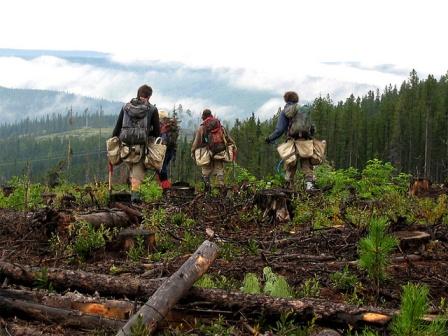
Planting Trees
Systematic Coverage
Planters need to systematically approach, layout and plant a piece of land with proper density and quality. There are something like 27 ways you can plant a tree incorrectly and there is only one correct way.
Carrying Trees
Tree planters carry several hundred seedlings at a time in specially developed tree planting bags that rest at their sides. The weight can become unbearable near the end of the day, or at any time if the ground is steep.
Microsites
Each tree is planted in a prepared microsite. A microsite is a piece of the ground that has been identified by the planter as being well suited for growth. Furthermore, on many projects, the microsite must be prepared by the planter by removing, or less commonly, adding debris.
Planting the Tree
After the microsite has been prepared, the planter uses their tree planting shovel to open a slit in the ground into which the tree is skillfully inserted so the roots stay nice and straight. The hole is closed with a hand or a foot, and the planter is off to find their next microsite.
Sounds pretty easy, doesn’t it?
Repetition
Remember, tree planters are paid by the number of trees that they plant. At prices like $0.08 – $0.25 per tree, tree planters have to plant a lot of them to make good income. Being a successful tree planter requires good technique (which is a big topic), good stamina and an exceptional personal motivation. Tree planters have to push themselves hard for long hours in adverse environments to succeed.
A Simon Fraser University study of treeplanters revealed that the physical exertion level and work efficiency of treeplanters is among the highest ever recorded in human occupational performance studies. In fact, they measured treeplanters with relative exertion levels 75 per cent of an Olympic marathoner – and tree planters do it every day.
Special Equipment
Some tree planting projects require special equipment to move trees, people, camps, food or just plain everything. It is not unusual for planters working in some regions to be flown to work every day by helicopter or swamp buggy.
Working with helicopters can be a blast. Not all companies use or need them so be sure to ask if it’s something that you’re really looking forward to. The only problem with helicopters is that when the fog sets in, helicopters can’t fly.
Swamp buggies are pretty neat as well. Guys tend to be a bit more impressed than the ladies. However, nobody is impressed when they have to ride in them for a half hour or more – or when they break down or get stuck.
The Living Environment
Some tree planters will commute from town while others will be situated in remote bush camps. These are a topic in themselves and are addressed elsewhere in the website.
Other Challenges
- Planting starts in the early spring. It’s cold and the weather can get nasty. Tree planters are expected to work in pretty much all weather conditions. There are strict contract deadlines and the trees have to go in the ground.
- Planters are often far away from home.
- Quite often you will live in a remote bush camp that has few of the perks of civilization.
Planters have to live in close quarters with people from different walks of life and diverse backgrounds. - The bugs can be insane. Most tree planters have a good bug horror story – except the really lucky ones.
More Challenges…
- Sore muscles, blistered feet, destroyed hands, achy backs and all around fatigue are the norm. Some people find their body just can’t take it.
- Planters usually work alone all day or with a single partner somewhere nearby.
Planters often carrying heavy loads in terrain that is a challenge to walk on, let alone spend a whole day working in. - The trees must be planted to precise quality standards.
- Planters are only paid for trees planted well.
- It takes time and practice to learn how to plant quality trees quickly.
So Why Go Tree Planting?
- If you need to make a lot of money, and
- You don’t mind working really hard for it, and
- You don’t mind both working alone, and hanging out with a lot of people in remote wilderness locations…
You might find that tree planting is just for you!
More Information
There is so much more that Tree-planter.com can teach you about tree planting. We’ve been in this business since 1990 and our core team’s collective experience amounts to over:
- 2100 days in the bush,
- 5 million trees personally planted, and
- 17 million trees planted under our supervision.

